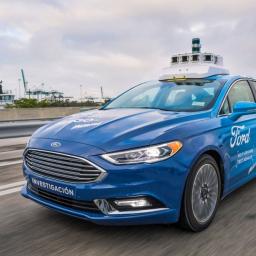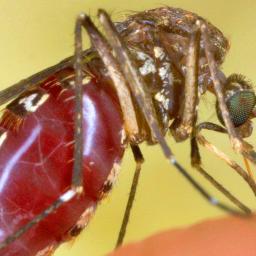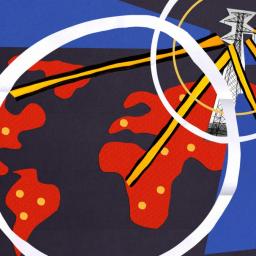 |
on (#44XH4)
The blockchain system has daunting technical problems to fix. But first, its disciples need to figure out how to govern themselves.
|
MIT Technology Review
| Link | https://www.technologyreview.com/ |
| Feed | https://www.technologyreview.com/topnews.rss?from=feedstr |
| Updated | 2025-12-20 21:47 |
 |
on (#44V0P)
Once nuclear’s strongest booster, China is growing wary about its cost and safety.
|
 |
on (#44RK0)
In 2015, an unknown Chinese scientist edited the DNA of human embryos. It was a step on an inexorable path to designer babies.
|
 |
on (#44HSE)
7 questions for Andrew Yang, the 2020 US presidential candidate pushing for basic income.
|
 |
on (#44GG8)
The biggest fear is that China could exploit the telecom giant’s gear to wreak havoc in a crisis.
|
 |
on (#44F3M)
The research institute AI Now has identified facial recognition as a key challenge for society and policymakers—but is it too late?
|
 |
on (#44C9W)
The coming rise in private spaceflight is prompting growth in space companies that give citizen astronauts the know-how they need to fly.
|
 |
on (#44BDP)
Some US experts think it could take at least 20 years to get quantum-proof encryption widely deployed.
|
 |
on (#448YB)
Smartphones that are used to track our faces and voices could also help lower the barrier to mental-health diagnosis and treatment.
|
 |
on (#446R4)
Creating a lifelike digital scene normally requires skill, creativity, and patience. Now we can just offload the work to an AI algorithm.
|
 |
on (#443G3)
Generative adversarial networks, or GANs, are fueling creativity—and controversy. Here’s how they work.
|
 |
on (#440S3)
The maker community helped me create everything from my bouquet to my cake toppers—and gave me an insight into the technology’s possibilities.
|
 |
on (#43YB9)
Optical chips have been tried before—but the rise of deep learning may offer an opportunity to succeed where others have failed.
|
 |
on (#43VVP)
The US economy could lose $221 billion annually by 2090 as people stop working as much or as hard.
|
 |
on (#43T9Z)
And that’s just in the United States.
|
 |
on (#43QJW)
He Jiankui says he created twin girls whose genes were edited to make them resistant to HIV. Was that ethical? Or even legal?
|
 |
on (#43P9T)
A daring effort is under way to create the first children whose DNA has been tailored using gene editing.
|
 |
on (#43HRP)
A diet supplemented with red algae could lessen the huge amounts of greenhouse gases emitted by cows and sheep, if we can just figure out how to grow enough.
|
 |
on (#43E1S)
The delivery giant’s new machine-learning app aims to reroute packages away from snow and other trouble spots in its global network.
|
 |
on (#43CYX)
The main targets were foreign media websites, says a new service that automates censorship-tracking in countries governed by repressive regimes.
|
 |
on (#4394W)
A startup says it has tackled a long-standing problem that has kept smart contracts from responding to actual events.
|
 |
on (#434Y0)
Yoshua Bengio wants to stop talk of an AI arms race and make the technology more accessible to the developing world.
|
 |
on (#4373T)
The automaker believes sponsorship and ride-sharing will be key to making its nascent autonomous-car business take off.
|
 |
The US military is testing stratospheric balloons that ride the wind so they never have to come down
on (#42YFB)
A sensor that can spot the wind direction from miles away will let DARPA’s surveillance balloons hover at the very edge of space in one spot indefinitely.
|
 |
on (#42XPX)
Policies leading to more destruction of the Amazon and Cerrado would have a huge impact on climate change.
|
 |
on (#42XBT)
Debate over a new idea for stopping malaria is pitting some environmental groups against Bill Gates.
|
 |
on (#42H2C)
But are the country’s next-generation power lines a clean-power play or a global power move?
|
 |
on (#42F01)
Kebotix is using AI and robotics to brainstorm—and then test—novel compounds.
|
 |
on (#429T9)
The firm will pit its Bristlecone quantum processor against a classical supercomputer early next year and see which comes out on top.
|
 |
on (#424MN)
At Ethereum’s annual developer conference, its founder tells us why his technology can only be truly decentralized if it stops depending on him.
|
 |
on (#421CQ)
With the growth in e-sports, more gamers are investing in some personal tutoring to help them progress. We paid a Fortnite coach to teach us his top tips.
|
 |
on (#41ZM2)
An MIT experiment is handing a single person’s free will to the crowd to test how the digital hive mind works.
|
 |
on (#41WER)
A manufacturing trick with magnetic fields produces a battery that may discharge fast enough to get an aircraft off the ground.
|
 |
on (#41SFS)
The fiber-optic cables carrying data across the internet are vulnerable to hacking. Two US initiatives aim to fix that by creating super-secure quantum transmissions.
|
 |
on (#41JDX)
The infamous “trolley problem†was put to millions of people in a global study, revealing how much ethics diverge across cultures.
|
 |
on (#41CYE)
One day, gene therapy may help with the rarest of diseases. Some parents aren’t waiting.
|
 |
on (#41B8R)
Are we designing inequality into our genes?
|
 |
on (#41655)
Amazon paid $1 billion for the security company. Our data analysis questions the claims that purchase was based on.
|
 |
on (#415AY)
Your life span is written in your DNA, and we’re learning to read the code.
|
 |
on (#413BE)
Your family and friends will be able to interact with a digital “you†that doles out advice—even when you’re gone.
|
 |
on (#410EW)
But can any company afford to manufacture one-off medical care?
|
 |
on (#40Y44)
A new wave of chatbots are replacing physicians and providing frontline medical advice—but are they as good as the real thing?
|
 |
on (#40VFW)
Analyzing the way you type and scroll can reveal as much as a psychological test.
|
 |
on (#40R8W)
We’ve been using it to type for 144 years. Here’s why it works, and what it would take for us to give it up.
|
 |
on (#40MY3)
Even the best AI programs still make stupid mistakes. So DARPA is launching a competition to remedy the field’s most glaring flaw.
|
 |
on (#40HHM)
A simulation lets autonomous cars experience situations that are too dangerous to try in reality.
|
 |
on (#40FN5)
Lockheed Martin engineers wear the goggles to help them assemble the crew capsule Orion—without having to read thousands of pages of paper instructions.
|
 |
on (#404DP)
In as little as 24 hours, Mapper will deliver a machine-readable map of any place on earth with public roads.
|
 |
on (#4078W)
It should be possible to automatically identify dubious news sources—but we’ll need a lot more data.
|
 |
on (#400XC)
The White House should worry less about China’s progress and invest heavily in artificial intelligence breakthroughs, according to Kai-Fu Lee.
|